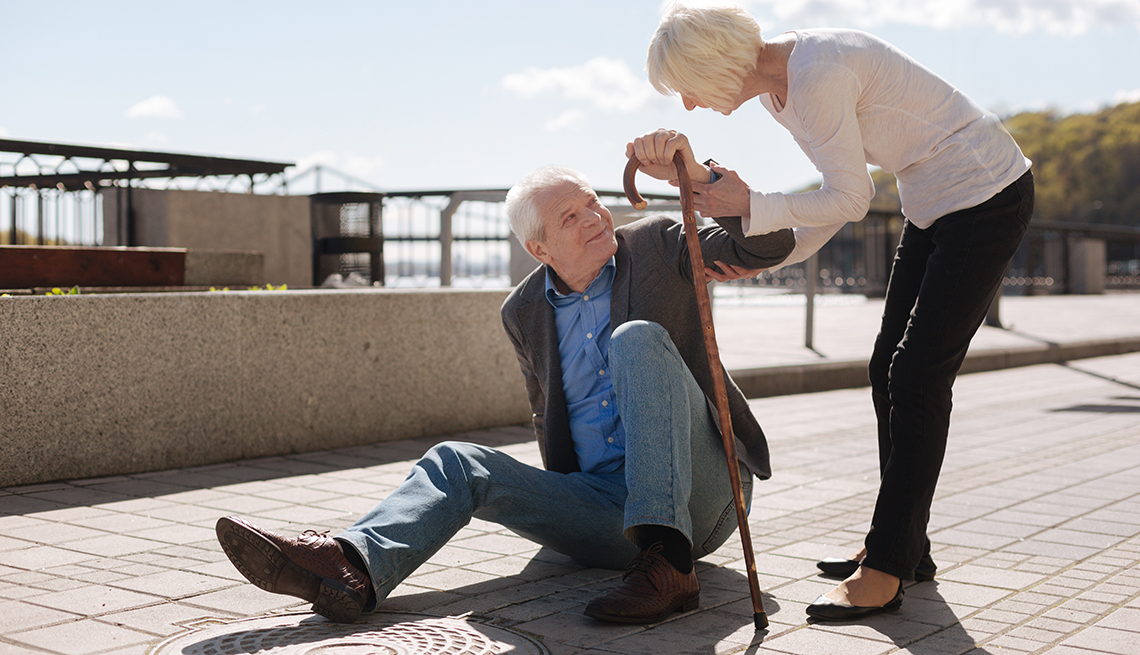AARP Hearing Center
With aging comes an increased risk for slip-and-fall accidents, some even resulting in death, as we saw with former Fox News CEO Roger Ailes. The newsman died Thursday at the age of 77 following a fall in his bathroom that resulted in a head injury, according to news reports.
More than 1 in 3 people 65 or older fall each year, and the risk rises with age, in part due to conditions such as arthritis, inner ear problems and diabetes. Additionally, medications may cause dizziness, which can also lead to falls. Many victims end up in the hospital, with 1.6 million older U.S. adults going to emergency departments for fall-related injuries, including fractures. Falls can leave victims in pain, less mobile and at risk for depression.
The financial toll also is high. In 2015, costs for falls totaled over $31 billion to Medicare alone, according to the Centers for Disease Control and Prevention, with the average hospital visit totaling more than $30,000. As the population ages, the financial toll is expected to increase to as much as $67.7 billion by 2020, according to the National Falls Prevention Resource Center.
While concerns about falling are understandably prevalent for many older people, there are ways to protect yourself and safeguard your home.
Exercising to improve your balance
- Try a balance stand. Stand on one foot while brushing your teeth and hold your weight on one leg for 30 seconds or longer. Then switch sides.
- Toe the line. Walk heel-to-toe by positioning your heel in front of the toes on your opposite foot each time you take a step along an imaginary line.
- Sit and stand. Get up from a chair and then sit back down. Repeat.
- Go to the gym. Ask a trainer to teach you exercises using balance balls or boards. Or join a yoga, tai chi, Pilates or dance class.
- Try strength training. Using weights or resistance bands can improve balance while also improving muscle tone and bone strength.
Taking preventive measures
- Talk to your doctor and pharmacist about your medications and their potential side effects, including dizziness.
- Have your vision, eyeglasses and hearing checked annually.
- Take your time getting out of bed. Sit up for a moment or two to ensure that you are not too dizzy to stand and walk.
- Be cautious when wearing high-heeled or new shoes, especially when walking in unfamiliar areas.
Being aware of your environment
- As seen in the case of Ailes, the bathroom can be a prime place for falls. Consider installing a grab bar on the wall of your bath or shower to help with balance.
- Loose rugs or carpeting add fall risk in your home, as do slick hardwood floors. Give your home a once-over for potential fall hazards.
- Increase lighting in dark areas of your house and outdoor walkways.
- When outdoors, watch for invisible ice. Ensure that sidewalks, driveways and streets where you park are salted in bad weather.
The National Falls Prevention Resource Center also offers tips for older adults and caregivers on how to prevent slips and falls in the home. If you still have concerns, the National Institutes of Health recommends speaking with your doctor or other health care provider. It is important to address your fears while still staying active and maintaining good physical health.


































































